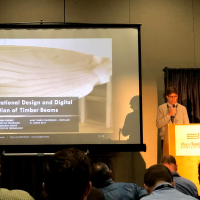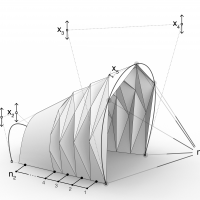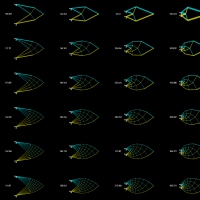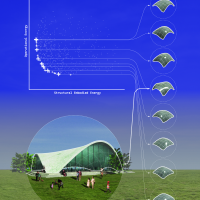Tag: optimization
-
 Paul Mayencourt presents at 2018 International Mass Timber Conference2018-03-21, Tags: conference digital-manufacturing optimization structural-optimization timber fabrication
Paul Mayencourt presents at 2018 International Mass Timber Conference2018-03-21, Tags: conference digital-manufacturing optimization structural-optimization timber fabricationPaul Mayencourt is presenting his work on "Digital Fabrication and Structural Optimization of Timber Beams" at the 2018 International Mass Timber Conference in Portland, Oregon on March 21, 2018. Demi Fang will also be attending the conference to represent Digital Structures.
-
 Design, mechanics, and optimization of interlocking wood jointsResearch, 2017 - Present
Design, mechanics, and optimization of interlocking wood jointsResearch, 2017 - PresentDespite the longstanding craft of interlocking wood joints in North American and East Asian carpentry, modern timber structures frequently use metal connectors in mid-rise construction. This research explores the structural capabilities of interlocking joints between beams and columns for mid-rise timber frame construction. Research methods include parametric design, structural modelling, digital fabrication, and experimental load testing.
-
 Structural optimization of folded plate structuresResearch, 2016
Structural optimization of folded plate structuresResearch, 2016This project explores the potential of folded plate structures to be a structurally optimized architectural typology.
A custom Grasshopper script was developed in which the designer can determine the form of a spanning folded plate structures by adjusting the control points of two curves through which the base surface is lofted. The input geometry is then connected to two different optimizers, Goat and Digital Structure's own Stormcloud, to generate different optimized alternatives close to the base shape.
The findings demonstrated that the folded plate typology inherently performed better than a continuous shell of the same shape. Structural optimization was shown to offer a wide design space for the global morphology of folded plate structures.
A video overview of the parametric modeling process and a few case studies is presented here.
-
 4.450: Computational Structural Design and OptimizationClass, 2015 - Present
4.450: Computational Structural Design and OptimizationClass, 2015 - PresentThis research seminar focuses on contemporary applications of computation for creative, early-stage structural design and optimization for architecture. Topics covered include computational design fundamentals, including problem parameterization and formulation; design space exploration strategies, including interactive, heuristic, and gradient-based optimization; and computational structural analysis methods, including the finite element method, graphic statics, and approximation techniques. A range of historical and contemporary examples of structural optimization in theory and practice are introduced and investigated as case studies. Students will also complete semester-long individual research projects, which will focus on the development, implementation, or application of an innovative computational approach for structural design. Project images by Juney Lee, Chikara Inamura, Mike Stern, and Geoff Tsai.
-
 Structural lattice additive manufacturingResearch, 2015 - Present
Structural lattice additive manufacturingResearch, 2015 - PresentThe structural performance of traditional 3D-printed parts is typically limited by nature of the ayer-by-layer construction. Such parts are anisotropic due to decreased adhesion between layers and the internal structure is uniform, not flexible. This project seeks to overcome these limitations by printing along the edges of a stress-optimized lattice. With this approach, larger-scale, lightweight parts can be printed with an optimal structure that can vary depending on a loading configuration. The results of this project may be promising for diverse fields including concrete rebar design, spaceframe prototyping for buildings, and generative art.
The fabrication component of the project includes designing a custom extruder for a six-axis robotic arm that excels in printing along hard-to-reach toolpaths in free air, with larger nozzle diameters. To complement this technology, a computational tool is in development to generate lattices and toolpaths for any part and its loading configuration.
-
 Multi-objective optimization for early-stage architectural designResearch, 2014 - Present
Multi-objective optimization for early-stage architectural designResearch, 2014 - PresentIn traditional optimization, an algorithm can be applied to a well-defined problem to return a single solution. In architectural design, problems are rarely this simple—building design is a process full of human preferences and interrelated performance tradeoffs. Multi-objective optimization (MOO) is often more appropriate for managing the various design influences and priorities in conceptual design, but it is inherently dependent on human input throughout the process. This research presents a variety of visualization techniques and computational methods that have been developed to facilitate the use of MOO in conceptual architectural design.


